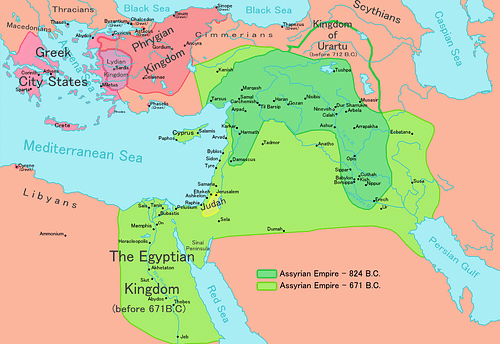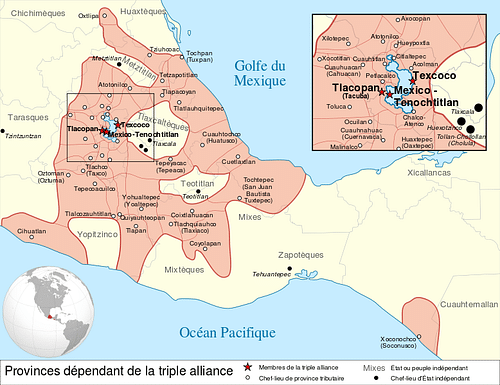What is an Empire?
Firstly, though, let’s think about what actually makes an empire an empire. It’s not a case of how much land is covered, nor about how many people are subject to its rule. It’s not really a quantitative problem at all.
Rather, the things that make an empire properly imperial are only two: one is a case of conquest or of a ruler taking over many different territories; the other is semantic, meaning that it is a problem of language.
Conquest and Territories
In the first case, historians have designated as empires groups of territories that are all subject to one ruler – directly or indirectly. This means that whilst Russia now might be very large, it doesn’t mean it’s an empire.
But, if it were to invade Mongolia and replace its government, then we would have something of an empire: two territories – or more if it then went on to conquer China – would now be under the control of one ruler or government. As such, empires often show significant ethnic, religious, linguistic, and cultural diversity.
Let’s take the Ottoman Empire as another example. At one point, countries as diverse as Egypt, Bulgaria, Greece, and Lebanon were all under the domination of the Ottomans, who were based primarily in Turkey. These countries made up different ‘eyalet’ – or administrative units – of the Empire and were ruled by governors under the supervision of the Sultan or Emperor. This subordination, following imperial expansion and conquest, is thought to be a defining feature of an empire.
Land and Sea
It is important to point out that there are two main types of empire within this idea. These are known as ‘terrestrial empires’ and ‘thalassocracies’, the first being empires conquered by land and the latter being those dominated by sea.
The Mongol Empire is a great example of the former, as it spread outward, under Genghis Khan, from the Mongolian steppes. At the start of the empire, Genghis sent invasions in all directions to defeat and reign over as much land as quickly as possible.
Whilst terrestrial empires are often contiguous – meaning all joined up – thalassocracies, or sea empires, do not need to be. The British Empire is an example of this, as it captured territories across the world – islands and ports as much as countries – through its incredibly powerful navy.
The Name ‘Empire’
The second definition of an empire is essentially that it calls itself an empire. This happens when a ruler changes his title of ‘king’, say, to that of ‘emperor’. This happened quite a lot.
The Russian Empire is a famous example. Here, the kings had been engaging in imperial activity since Ivan the Great and even before – conquering territories and the like. Yet, it wasn’t until 1721 that Peter the Great decided to call Russia an Empire, changing its official name from a tsardom.
The Roman Empire did something quite similar, as, whilst Octavian, or Augustus, took the title of Emperor, the Roman Senate in Rome had been expanding its borders for a long time previous to this.
On the flip side, Korea, in 1897, started calling itself the Great Korean Empire, even though it owned no further land than Korea and was swallowed up eight years later by Japan.
Decline: Why do Empires Fall?
It’s something of a truism these days that ‘all empires fall’, no matter the prosperity or peace that they may bring to their people eventually. Herodotus, the Greek historian who lived even before the Roman Empire, already knew this. Nonetheless, historians today are still not one hundred percent agreed as to why empires collapse.
They all do, however – usually as a result of their rulers becoming complacent and weak. Others, such as the Mongolian Empire, might become too big to manage, whilst others still faced invasions from outside – such as the Roman and the Qing empires. Four of the empires we look at collapsed – or were seriously weakened – due to war. It just happened to be the same war that did it!
An Empire is a political construct in which one state dominates over another state or a series of states. At its heart, an empire is ruled by an emperor, even though many states in history without an emperor at their head are called “empires”.
What is an Empire?
At its core, an empire is the domination of one state by another. This idea lies at the heart of the common use of the term ’empire’ and is as old as state-building itself. The earliest city-states tried to grow by taking over their neighbors. Where they succeeded, a single larger state might form, but more often the aggressor became a core state holding sway over a number of semi-independent peripheral states – a halfway stage to a larger state. This core state became more than merely the strongest in the region.
An empire is an unequal relationship between a core state and a periphery of one or more states controlled from the core.
Sparta was the leader of a league of states but had little interest in interfering with their domestic politics. Athens, by contrast, also led a league but forced a supervised Athenian-style democracy on its supposedly independent members. Sparta was a hegemonic state, the strongest of a group, while Athens was interventionist and thereby imperial. The fact that Athens replaced tyrants with democratic government did not affect the imperial nature of this relationship.
Empires & Control
An empire is an unequal relationship between a core state and a periphery of one or more states controlled from the core. On the simplest level, control means military occupation or other formal political intervention, but it can also cover informal economic or cultural influence. Economic pressure by itself has frequently been enough to manipulate governments. Religion, ideology, or other cultural forces have habitually accompanied political or economic persuasion.

The culture of the periphery, however, can exert its own pull and threaten to absorb a conquering power, most famously in the case of the Mongol conquest of China. As such, cultural imperialism is not a necessary component of empire.
In fact, neither is cultural difference per se, given the difficulty of deciding where one culture ends and another begins. In the modern era, the borders of the nation-state have tried to settle this matter, but the nation-state itself formed around a core state that standardized language and other aspects of culture in a way that typically alienated outlying regions. In the end, the acid test for cultural identity has remained solidarity in the face of a common enemy and this is a test most empires have at some stage passed.
Core & Periphery
To explain how empires, thus defined, have risen, persisted, and fallen over the millennia, the core, the periphery, and the international situation each need to be examined.

The core state is the place to look to find various motives for expansion, from the dream of imposing an imperial peace on squabbling states to the desire for economic exploitation, lust for the glory of conquest or zeal for evangelism, religious or ideological.
The periphery is the place to look for crucial resistance or collaboration. Specifically, the fates of many empires have hinged on peripheral leaders deciding where their best interests lay. Often, the core can provide an account of an empire’s rise, while the periphery better explains its persistence.
Examples of Empires in the ancient world include those of Sumeria, Babylonia, Assyria, the Hittites, the Egyptians, the Persians, the Macedonians, the Inca, the Aztecs, and, most famously, the Romans.
8 of the largest empires in history
- Persian empire
Also known as the Achaemenian Empire, the kingdom created under Cyrus the Great stretched from Iran into Central Asia and Egypt. - Han dynasty
Established in 206 BCE, China’s Han dynasty lasted more than 400 years and expanded from China into Vietnam and Korea. - Umayyad Caliphate
Established following the death of Muhammad in 632 CE, the vast Umayyad dynasty comprised over 4 million square miles, making its empire one of the largest in history. - Mongol empire
One of the largest contiguous land empires in history, the Mongol Empire spread throughout the 13th and 14th centuries CE. It rose from a collection of nomadic tribes in Central Asia and at its height extended from Central Asia to Central Europe and to the Sea of Japan. The empire’s best-known leader was Genghis Khan, who founded the empire in 1206 CE. - Ottoman Empire
At its height, between the 16th and 17th centuries CE, the Islamic empire of Süleyman the Magnificent covered portions of three continents: Southeastern Europe, Western Asia, and North Africa. The Ottoman Empire collapsed in the early years of the 20th century. - Spanish empire
At its height, in the late 1700s, the Spanish empire comprised 5.3 million square miles and wielded tremendous economic and military power. - Russian Empire
At its greatest extent, in 1895, the Russian Empire reached 8.9 million square miles. Because of its size and influence, the empire had played an integral role in halting Napoleon’s conquest of Europe. - British Empire
At its greatest extent, early in the 20th century, the British Empire comprised nearly a quarter of the planet and an equal percentage of its population. Many of the territories it colonized have since gained independence, though several remain part of what is known as the Commonwealth of Nations today.
